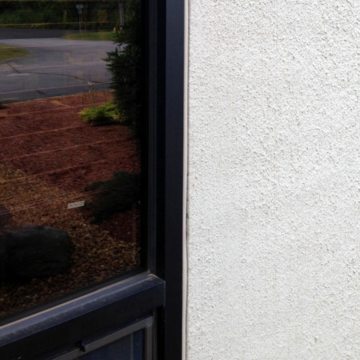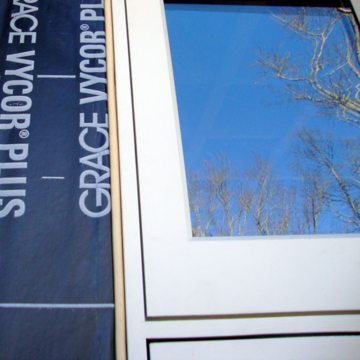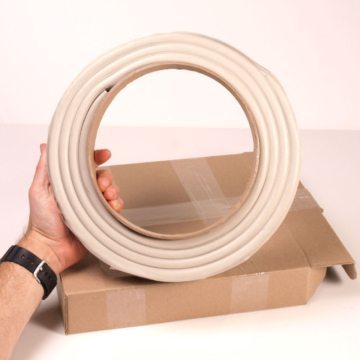Sealing Windows with Colorseal-on-a-Reel Considerations
Patent Pending
Colorseal-on-a-Reel (COR) provides a unique, durable alternative to sealing and insulating window perimeters. In contrast to traditional wet sealing (caulk and backer rod) approaches, COR is tensionless. This means that tensile stresses that cause liquid sealants to fail are eliminated. This is true at the bond line and within the cured sealant itself.
In addition, with an R-Value of 2.14 per inch of depth, COR insulates building envelope at the window perimeters.
COR is not for any window job, however. COR is generally reserved for applications where high-quality windows are being installed into properly detailed window openings.
Like any sealant, COR is only as good as the substrates. Windows must be properly factory sealed within the units themselves and feature properly tested self-draining weeps.
Preparation of window openings must incorporate best practice flashing methods to direct any water that may get through the window system back out to the face of the structure.
The following conditions are essential in order to successfully use Colorseal-on-a-Reel in window perimeter applications:
1. Window mullions must have adequate depth.
Generally, this means a depth of at least 3-inches (75mm). This depth is required so that the mounting shims can be held to the back (inside) of the mullions while leaving 2-inches (50mm) of free, clear depth to receive the COR installed from the outside.
2. Window mullions must have smooth sides.
The sides of the window mullion that face the window opening must be flat. This means no fins or extruded protrusions that result in a cavity beyond the face that is wider than the visible opening. Mullions that are not smooth through their depth are hard to seal with any method.
They result in insufficient surface area for wet sealant to bond to and a cavity beyond the outer fin that prevents installation of a properly sized backer rod.
For COR, mullion protrusions prevent the installation of a mounting bead of silicone on the window side. In addition they prevent proper sizing. This is because the material must fit past the small opening at the face but then expand into the big void beyond.
3. Window frames must be robust.
COR exerts a back pressure of about 2.5 psi. This is enough to bow cheap extruded window frames. Bowing can affect the operation of moveable panes. High quality extruded frames that contain adequate internal bracing and stiffening elements are usually fine. Metal and well-constructed wood residential windows and commercial grade store-front or curtain wall systems are generally fine.
4. Mounting shims must be held back 2-inches (50mm) from the outside face of the window mullion.
As described in (1) above the shims cannot be installed so as to interfere with the the full depth of the COR. While notching the back of COR can be done within reason, it is not advisable. Notching slows installation and cuts away the foam backing that provides the R-Value.
5. Windows must be centered carefully to reduce joint gap variation.
Maintaining a consistent gap around windows is important for many reasons. When a gap is too small it simply cannot be properly sealed. If the joint gaps vary too radically, then seal size switching is required. Size switching is possible and practical, it just requires more careful measuring so that multiple sizes can be ordered and it makes for a trickier, slower installation.
6. Care must be taken at joins and at corners.
Of course, care during installation should be taken everywhere. However, it is critical where the COR butts into the corners of the window opening that proper care is taken to install a bead of liquid sealant (supplied with the COR) into which to embed the end of the COR.
This is true also for where the COR butts into the side of itself and where joins in straight runs are executed.
7. Use a compatible silicone for installation against air barriers.
When installing COR between a window frame and an air barrier (like in the Vicor picture at left) it is important that the silicone chosen by you for the COR is compatible and will adhere to the air barrier. When you order, let EMSEAL know and we’ll help guide the selection or supply the mounting silicone in a compatible forumulation.
If you can comply with all of the above conditions, you can use Colorseal-on-a-Reel around your windows.
In doing so you will join the ranks of discerning owners and builders who are tired of re-caulking windows and who understand the advantages of doing it right the first time.







